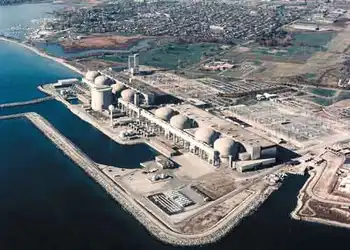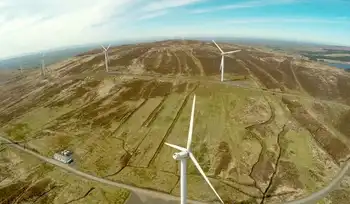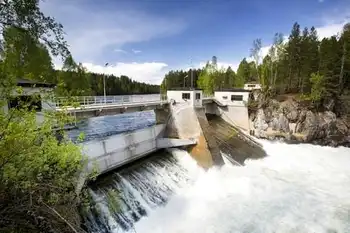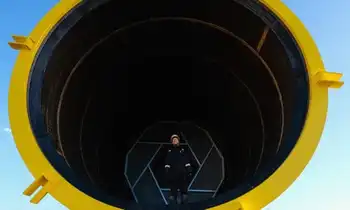Ameren buries hopes for buried power lines, puts efforts into tree trimming
By Knight Ridder Tribune
NFPA 70b Training - Electrical Maintenance
Our customized live online or in‑person group training can be delivered to your staff at your location.

- Live Online
- 12 hours Instructor-led
- Group Training Available
Stung by massive power outages caused by ice and wind storms last year, the AmerenUE utility is spending $300 million in a three-year program to bury cables now seen as particularly vulnerable. The idea is that ice-laden or wind-tossed branches can't bring down lines once they're safely tucked several feet underground.
But in Central Illinois, an area just as badly ravaged by those storms, there is no similar initiative. AmerenIP is part of the same Ameren Corp. business family as AmerenUE, but they have their own budgets and their own approaches to safeguarding power supplies. AmerenIP says power lines for many new developments are placed underground because it's cheaper to do it at the start of construction, and developers are willing to pay for it.
The company says "undergrounding" existing cables in older neighborhoods, however, is staggeringly expensive, working out at something like $1 million a mile. Natalie Hemmer, an AmerenIP spokeswoman, said especially troublesome cables may be buried underground, but the company has no large-scale program to do this or the means to pay for it. She says AmerenIP, along with its sister Illinois utilities AmerenCIPS and AmerenCILCO, is jointly spending some $110 million over the next three years on an aggressive tree-trimming initiative to protect power lines.
She also points to a $114 million program to "harden" the electrical system by installing devices that contain the affects of power cuts by limiting the number of homes and businesses losing power.
Hemmer says burying cables might be the way to go in an ideal world, but any widespread effort to do it now would involve passing on massive costs to already hard-pressed consumers. "In 2007, our focus has been on rate relief," she said. "We want to get customers rate relief to help ease some of the bills they've been experiencing." But having to melt snow to flush your toilets after the power has gone off has a way of changing outlooks on the pros and cons of burying cables. Decatur couple Carol and Joe Thomas had to do that during last winter's ice storm when the power went off and they were left without heat, lights or water pressure.
Ice-laden branches had taken down power cables serving their street, and the lines stayed down for five days. "Buried cables for us obviously would have been a plus," said Carol Thomas, 59, who is disabled and has difficulty walking. "And while it may be expensive, look at how much money the power company had to spend in overtime and everything to repair all those lines. That cost was horrendous and would go a long way to putting some of these lines underground."
In December, Ameren Corp. estimated that the post-ice storm repair bill for its utilities topped $100 million. Hundreds of thousands of customers in Illinois and Missouri were left without power, and 7,000 linemen from 14 states were called in to make repairs that took weeks to finish.
AmerenUE decided enough was enough and launched Project Power On, which includes a cable-burying program in a $1 billion push that will also spend $84 million on upgrading cables and equipment and $135 million on tree trimming. Another $500 million is being spent on cleaning up power station emissions.
The Missouri electrical market is still regulated, unlike the Illinois market, and $200 million of Project Power On was approved in extra power charges agreed by state officials who oversee electricity rates. AmerenUE spokesman Tim Fox said the company ould expect to gradually get its investment back "over a long period of time" from increased customer charges but was more interested right now in keeping the lights on.
He said burying cables won't guarantee power supplies will never be interrupted, but the aim was to limit the damage. "So the hope is we'll see fewer outages and quicker restoration times," he added.
The Illinois Commerce Commission, which oversees utilities in this state, says there may be no widespread policies of burying power cables here, but that doesn't mean utilities aren't being held to higher standards. ICC spokesman Brian Sterling said the commission put "feet to the fire" to make sure utilities such as AmerenIP improve tree trimming procedures to safeguard lines.
And more pressure may be coming: A preliminary report, commissioned by the ICC, is due before the end of the year looking at how Ameren utilities dealt with the aftermath of the ice storm and earlier windstorms.











